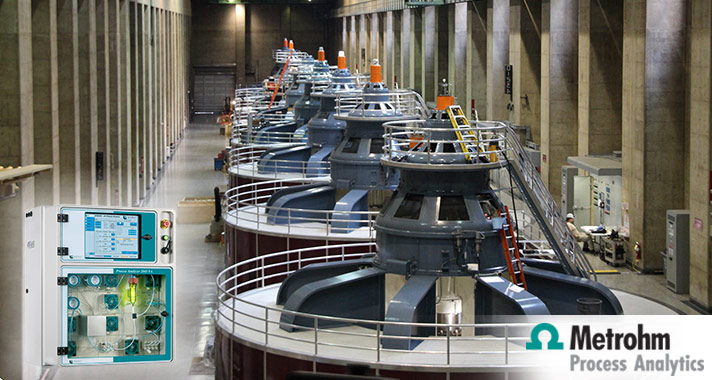Monitoring flow accelerated corrosion and metal transportation in power plants: Online ultratrace measurements of Fe and Cu
In power plants, corrosion is the primary factor leading to costly and critical downtimes. The water-steam circuits in fossil and nuclear power plants are inherently prone to corrosion, as metal components are constantly in contact with water.
Corrosion leads to shorter lifetimes
Corrosion leads to shorter lifetimes for the carbon steel pipework and copper heat exchangers, among other issues. At high temperatures, steam reacts with the iron in the carbon steel of steam boilers and forms a thin layer of magnetite (Fe3O4) or hematite (Fe2O3) (the form depends on the levels of oxygen present) which passivates and protects the surface against further corrosion (Schikorr reaction).
Flow Accelerated Corrosion (FAC)
Under turbulent flow conditions, Flow Accelerated Corrosion (FAC) can occur in which the inhibiting magnetite (or hematite) layer flakes off, leading to elevated iron concentrations in the water-steam circuit. The underlying metal corrodes to re-create the oxide, and thus Fe loss continues, potentially leading to catastrophic failure in the piping.
Cu depositions
In power plants which utilize copper alloy heat exchanger tubes in the condensate system, Cu corrosion and transportation is also an issue, leading to Cu deposition on high pressure turbine blades and loss of performance. Corrosion and metal transport increase with power output over a certain threshold, and therefore so does the deposition onto the turbines.
Considering up to 10% loss of efficiency from the turbine blades, the power output will still be the same but 10% more energy has to be consumed, and as flow increases corrosion also increases.
Metrohm Process Application Note AN-PAN-1032
The Metrohm Process Application Note AN-PAN-1032, which you can download from the tab below, outlines the voltammetric method for the online analysis of iron and copper corrosion products using the 2045VA Process Analyzer from Metrohm Applikon. The sample can be processed with or without automatic thermal digestion allowing for separate analysis of soluble and particulate Fe and Cu. Typically, the Fe measurement takes 40 minutes and the combined Fe and Cu analysis is 58 minutes.









